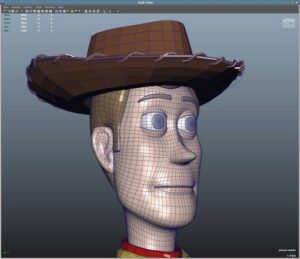 University of Utah College of Engineering alum, Ed Catmull, the president of Pixar Animation and Walt Disney Animation whose technological advancements in computer animation revolutionized Hollywood movies, will be awarded his sixth scientific and technical Academy Award this February, the Academy of Motion Picture Arts and Sciences announced.
University of Utah College of Engineering alum, Ed Catmull, the president of Pixar Animation and Walt Disney Animation whose technological advancements in computer animation revolutionized Hollywood movies, will be awarded his sixth scientific and technical Academy Award this February, the Academy of Motion Picture Arts and Sciences announced.
Catmull will receive the Academy’s Scientific and Engineering Award for his original concept behind “subdivision surfaces as a modeling technique in motion picture production. Subdivision surfaces have become a preferred modeling primitive for many types of motion picture computer graphics,” according to a news release. Computer graphics researchers Jos Stam and Tony DeRose will also receive the award for their scientific and practical implementation of the concept.
 “Subdivision surfaces” is a method in computer graphics to produce a smooth surface of an object (such as Woody’s head from “Toy Story,” left) over a digital wire mesh. Catmull discovered the process in 1978 along with fellow U alum, Jim Clark.
“Subdivision surfaces” is a method in computer graphics to produce a smooth surface of an object (such as Woody’s head from “Toy Story,” left) over a digital wire mesh. Catmull discovered the process in 1978 along with fellow U alum, Jim Clark.
This method would be an early milestone in the development of computer graphics and animation. Catmull also helped create the computer animation software known as RenderMan, which would be the core program used in the development of Pixar’s animated movies such as “Toy Story” and “Monster’s Inc.”
Catmull first attended the University of Utah in 1963 as a physics student but later took computer science classes as graphics were emerging as a new technology. In the late 1960s and ‘70s, he was paving new ground in computer technology along with other noted U pioneers that included Nolan Bushnell of Atari, interface designer Alan Kay, Silicon Graphics founder Jim Clark, and Adobe founder John Warnock.
During his time at the U in 1972, Catmull would produce a landmark film, a computer-animated version of his left hand that would be the first landmark in computer animation. In 1979, movie mogul George Lucas hired Catmull to head the computer animation division for Lucasfilm, producing special effects for a number of films In 1986, Apple co-founder Steve Jobs purchased Lucasfilm’s computer animation division and created Pixar with Catmull. In addition to dozens of short films, Pixar so far has produced 20 feature-length computer animated films that have earned more than $13 billion globally at the box office. In 2006, Pixar merged with Disney, and Catmull remained as president of the company while also becoming president of Disney’s Animation Studios.
As the president of Pixar Animation Studios, based in Emeryville, Calif., Catmull was responsible for the company becoming the most distinguished computer animation studio in the world with other box office hits such as “Finding Nemo,” “Up,” and “Coco.” In all, the film studio has garnered 15 Academy Awards, nine Golden Globes and 11 Grammys. Simultaneously, his tenure as the president of Walt Disney Animation Studios produced such hits as “Frozen,” “Big Hero 6,” and “Moana.”
In addition to the award he will receive in February, Catmull has earned four other scientific and technical Academy Awards for both the concept of subdivision surfaces and for the creation of the RenderMan software. He is also the recipient of the Academy’s Gordon E. Sawyer Award, which is given to an individual in the motion picture industry “whose technological contributions have brought credit to the industry.”
Catmull announced in October that he would retire from both Pixar and the Walt Disney Company at the end of this year. He will remain on as a consultant until July of 2019. He is also a member of the college’s Engineering National Advisory Council.